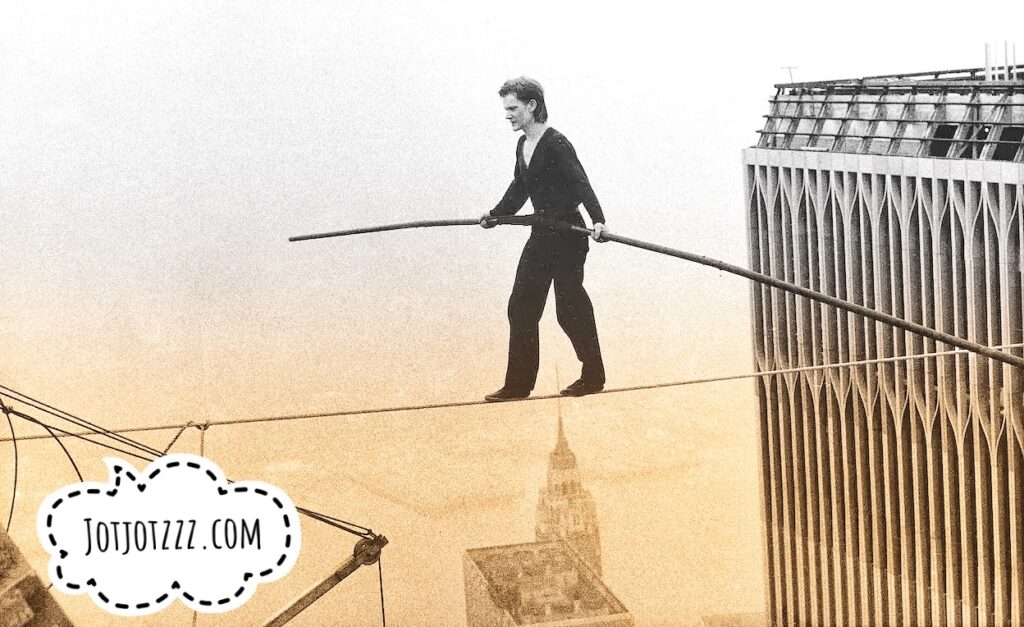
The picture shows Philippe Petit, a high-wire artist, at the top of the Twin Towers in the World Trade Center.
Life on a highwire requires balance. The artist holds a long pole that helps their inertia and steadies them along their center of gravity as they traverse the path. The highwire artist sways left or right but always finds a way to return to the center or else they will fall.
In the Tao Te Ching (from Stephen Mitchell’s translation), verse 29 states:
“Do you want to improve the world?
I don’t think it can be done.The world is sacred.
It can’t be improved.
If you tamper with it, you’ll ruin it.
If you treat it like an object, you’ll lose it.There is a time for being ahead,
a time for being behind;
a time for being in motion,
a time for being at rest;
a time for being vigorous,
a time for being exhausted;
a time for being safe,
a time for being in danger.The Master sees things as they are,
without trying to control them.
She lets them go their own way,
and resides at the center of the circle.”
“Resides at the center of the circle” is an apt translation. While some translations describe the sage as avoiding excesses and extremes, the essence of the verse is centering oneself, the true balance.
I particularly align with this idea, being born a Libra, the only inanimate object of the zodiac, whose quality of the scales symbolizes balance.
The scale is commonly known as the symbol of law, the scales of justice. It depicts a blindfolded woman with a scale in one hand, representing impartiality in reaching a fair and just decision. It represents judgment in a just and balanced way.
The idea of balance as justice or judgment is an allegory. But balance has more to do with the more profound duality—the duality of everything in this world.
The Tao Te Ching, in its many verses, tries to explain this duality, but it is the basis of everything in this plane of existence.
In his way, Siddhartha Gautama discovered this duality, and it was the catalyst that opened his third eye to Enlightenment and led him to become the Buddha. He called it the middle way or the middle path.
Jesus also knows of this duality. He traveled this middle path when he lived and died and rose from death to ascension.
In stillness, we attain the middle path. It’s not a path of stagnation or boredom, far from it. We can only get to the middle path by acknowledging the swaying of the extreme paths pulling us sideways.
The sage of the middle path is the master of the extreme paths. They have mastered duality and, therefore, live in non-duality.
For example, a sage of abundance can easily become poor and rich of his own choosing; therefore, he can travel the middle path and master the sway of both dualities.
Life in the extremes is like pendulums; the more we pull the ball of the pendulum to either extreme, the higher and faster it sways back and forth. Therefore, the closer the pendulum stays centered, the easier it is to control.
The middle way is like this: like a highwire artist traversing the rope on high, we must acknowledge the swaying to the left and the right, the good and evil, the light and dark, the heaven and hell, but we must return to center ourselves between the path.